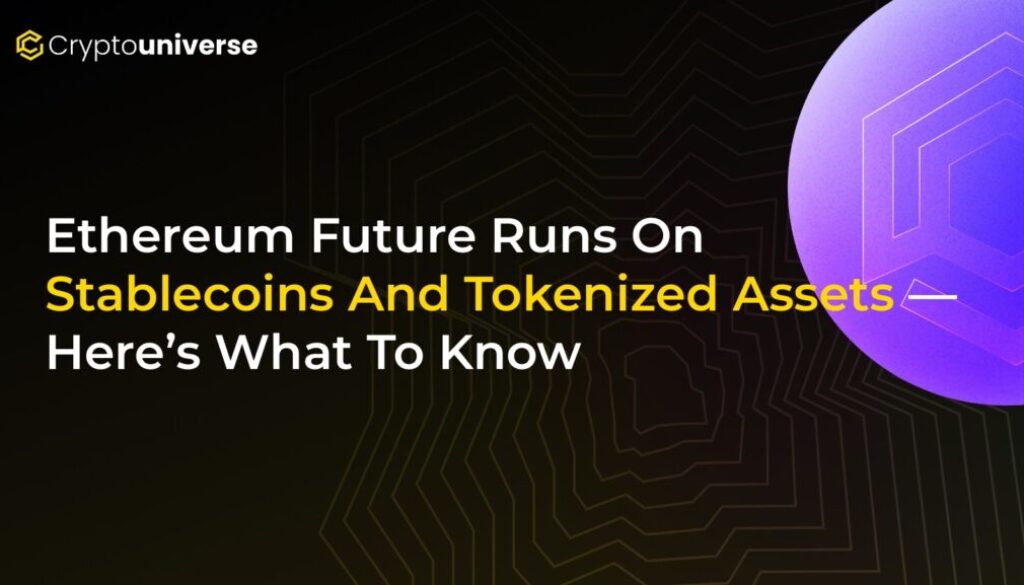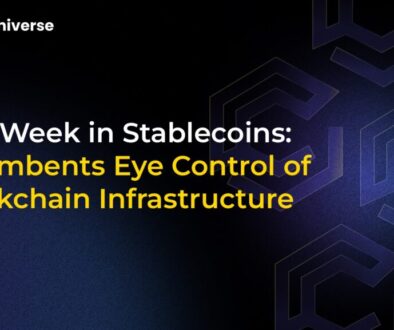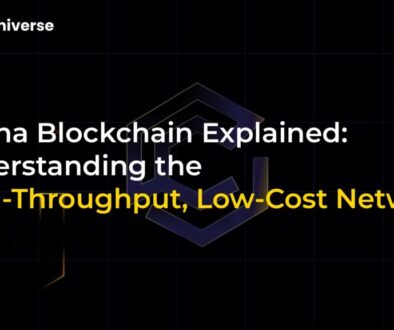Ethereum Future Runs On Stablecoins And Tokenized Assets — Here’s What To Know

The Narrative is Shifting: Ethereum’s New Role in Global Finance
For years, the story of Ethereum was one of volatile price charts, ICO booms, and complex technical jargon. But that narrative is undergoing a fundamental transformation. Ethereum is rapidly solidifying its position not just as a crypto platform, but as the global, compliant settlement layer for traditional finance (TradFi). This evolution isn’t happening in a vacuum; it’s being powered by two unstoppable forces: Stablecoins and Tokenized Real-World Assets (RWAs).
Forget the hype cycles of the past. The future of Ethereum is being built on tangible utility and its deep integration with the real-world economy. Let’s break down why this matters and what you need to know.
Stablecoins: Crypto’s “ChatGPT Moment”
If you’ve ever tried to explain cryptocurrency to a friend or family member, you might have been met with skepticism about its volatility and practical use. Bitcoin, for all its strengths, is often seen as a purely speculative asset. This is where stablecoins have changed the game completely.
Crypto analyst DeFi_Dad aptly described stablecoins as the “ChatGPT moment for crypto.” Before ChatGPT, artificial intelligence was an abstract concept for most people. Suddenly, it became a practical tool anyone could use. Stablecoins do the same for digital money. They provide a clear, relatable entry point:
- Practical Utility: A stablecoin like USDC or USDT is essentially a digital dollar. It holds its value, making it perfect for payments, savings, and transactions without the wild price swings of other cryptocurrencies.
- Attractive Yields: In a world of near-zero interest rates, the ability to earn 5-10% yields on stablecoins through decentralized finance (DeFi) protocols is a powerful incentive that clicks instantly for the masses.
- Mainstream Credibility: The conversation has shifted. Government officials and traditional media are now taking stablecoins seriously, discussing regulation and integration rather than outright dismissal. They are the bridge from speculative assets to functional digital money applications.
This shift makes Ethereum the foundational platform for this new wave of digital finance, with stablecoins acting as the stepping stone for millions of new users into the broader DeFi ecosystem.
The RWA Revolution: Bringing Trillions On-Chain
While stablecoins provide the currency layer, Tokenized Real-World Assets (RWAs) provide the asset layer. RWAs are digital representations of physical assets brought onto the blockchain. Think of things like:
- Real Estate
- Government Bonds
- Private Credit
- Art and Collectibles
By tokenizing these assets on Ethereum, we unlock immense value. Illiquid markets worth trillions of dollars become accessible, divisible, and tradable 24/7 in a transparent environment. This is the ultimate merger of TradFi and DeFi, and Ethereum is the primary venue where it’s all happening.
A New Floor for ETH’s Value: The Market Cap Connection
So, how does all this on-chain activity benefit Ethereum and its native token, ETH? A key insight from analytics platform Token Terminal provides the answer: the market capitalization of tokenized assets on Ethereum acts as a floor for ETH’s own market cap.
Here’s the logic: Every stablecoin, every tokenized bond, and every piece of digital real estate on Ethereum needs the network’s security to exist. The Ethereum network, secured by its validators, acts as the ultimate guarantor for the trillions of dollars in assets being built on top of it. As the total value locked and secured by the network grows, the intrinsic value of the network itself—and by extension, ETH—must also increase. The more value it secures, the more valuable its security becomes.
Under the Hood: Constant Innovation Keeps Ethereum on Top
To handle this explosive growth and solidify its role as a global settlement layer, Ethereum’s core technology must be constantly improving. Recent developments show this commitment to performance and robustness.
For instance, major upgrades to Go-Ethereum (Geth), the most popular Ethereum client software, deliver substantial performance and efficiency improvements. As noted by developer Richard Heart regarding a related project, the Ethereum mainnet serves as the ultimate testing ground. Its stability and battle-tested environment ensure that only the most reliable and optimized software enhancements are integrated, benefiting the entire ecosystem.
These technical advancements are crucial. They are the engine ensuring the Ethereum blockchain can handle the immense transaction volume that comes with tokenizing the global financial system.
Conclusion: A Future Built on Utility
The
The combined force of stablecoins providing a user-friendly entry point and RWAs bringing real-world value on-chain creates a powerful flywheel for growth. As this ecosystem expands, so too does the fundamental value proposition of Ethereum itself, cementing its place as the backbone of the future of finance.


